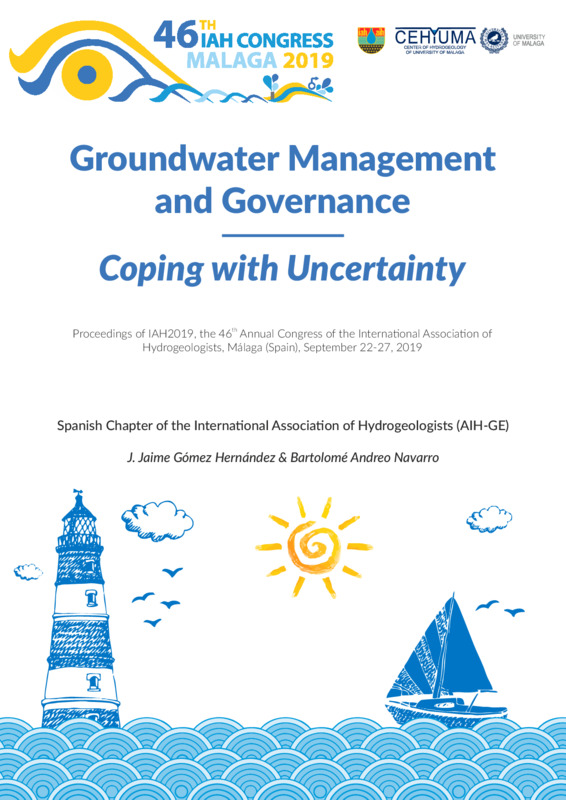Validation of vulnerability assessment by means of the Time Dependent, Model: case study from the Slovenian karst catchment
Објеката
- Тип
- Саопштење са скупа штампано у изводу
- Верзија рада
- објављена
- Језик
- енглески
- Креатор
- Vladimir Živanović, Nataša Ravbar, Igor Jemcov
- Извор
- Proceedings of IAH2019, the 46th Annual Congress of the International Associaton of Hydrogeologists, Málaga (Spain), September 22-27, 2019
- Уредник
- J. Jaime Gómez Hernández, Bartolomé Andreo Navarro
- Издавач
- International Association of Hydrogeologists (IAH)
- Датум издавања
- 2019
- Сажетак
- Groundwater vulnerability assessment methods are continuously being developed and existing methods are very often modified to provide better simulation of natural protection conditions and more objective results. Most frequently used methods are based on calculation of predefined parameters influencing water infiltration and underground flow, which can often lead to bias conclusions related to vulnerability evaluations. Some other methods, like the Time Dependent Model (TDM) are based on an approach, where parametrization is obtained at the final stage of the assessment. The main specifics are focused on the calculations of different flow travel time components, e.g., surface and groundwater flow (vertical flow path through the unsaturated zone, as well as horizontal flow path through the saturated zone). Moreover, the qualitatively different approach of vulnerability assessment enables direct translation of the results into sanitary protection zones according to the particular state legislation requirements. The TDM has been developed and successfully applied at several locations in the Serbian part of the Carpato-Balcanides. This paper presents its first application to the Slovenian part of the Dinaric karst and comparison to the most frequently applied methods of intrinsic vulnerability mapping in karst aquifers. An attempt to use the TDM as a groundwater assessment validation has also been made. The catchment of the Podstenjšek springs located at the Upper Pivka Valley in Southwestern Slovenia has been selected as a test site. In the past, four different methods of vulnerability mapping have already been applied (EPIK, PI, Slovene Approach, Simplified Method) to this test site using the same database and validated by means of tracer tests. The test site is characterized by temporal hydrologic variability, expressed by surface-groundwater interactions and variable drainage divides. The application of the TDM showed an alternative possibility to consider hydrologic variability in assessing groundwater vulnerability. In the case study it allowed clearer allocation of zones that are particularly vulnerable in various hydrologic conditions. The resulting groundwater vulnerability map shows the degrees of vulnerability, which are in direct function of surface and groundwater travel times and can thus be directly translated into protection zones according to Slovene legislation criterion. The results of the TDM assessment and comparison analysis can also be used as a tool for validation of vulnerability indices defined by other assessment methods.
- почетак странице
- 625
- isbn
- 978-84-938046-3-3
- Просторно покривање
- Slovenija
- Subject
- Ocena ranjivosti podzemnih voda, karstne podzemne vode, TDM metoda, delineacija sanitarnih zona, Slovenački karst
- Groundwater vulnerability assessment, Time dependent model (TDM), Karst groundwater, Groundwater protection zoning, Slovene karst
- Шира категорија рада
- М30
- Ужа категорија рада
- М34
- Права
- Отворени приступ
- Лиценца
- Creative Commons – Attribution 4.0 International
- Формат
Vladimir Živanović, Nataša Ravbar, Igor Jemcov. "Validation of vulnerability assessment by means of the Time Dependent, Model: case study from the Slovenian karst catchment" in Proceedings of IAH2019, the 46th Annual Congress of the International Associaton of Hydrogeologists, Málaga (Spain), September 22-27, 2019, International Association of Hydrogeologists (IAH) (2019) М34
This item was submitted on 26. децембар 2021. by [anonymous user] using the form “Рад у зборнику радова” on the site “Радови”: http://romeka.rgf.rs/s/repo
Click here to view the collected data.
